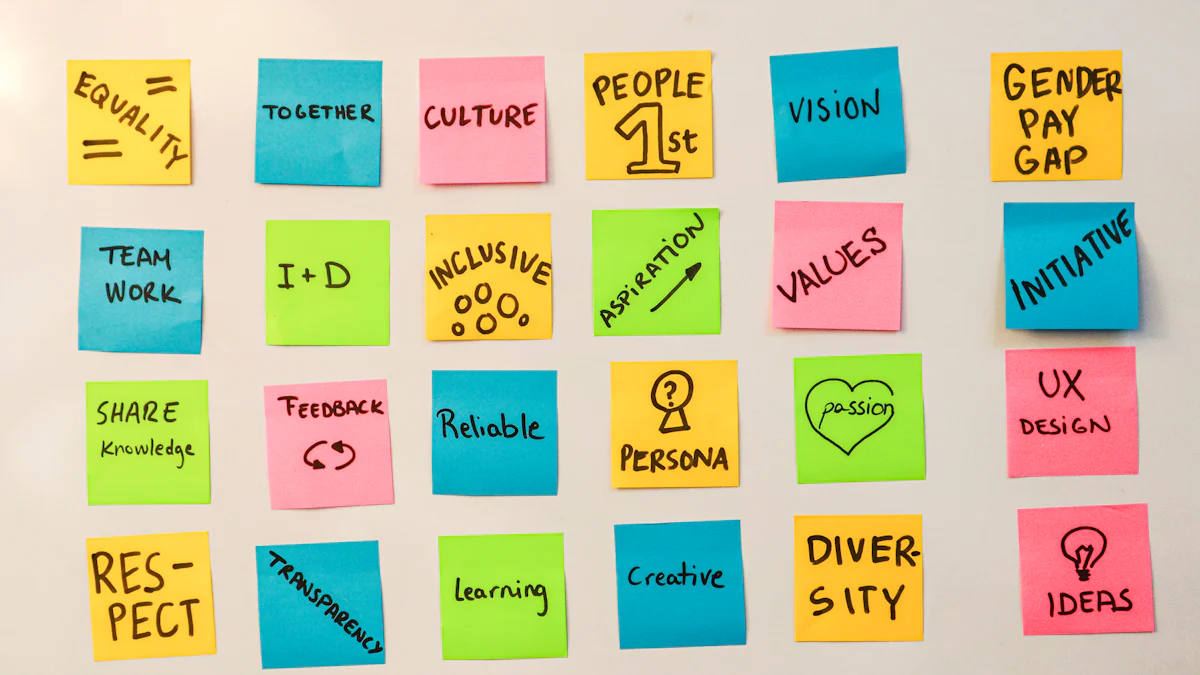Leading the Way in Organizational Culture Transformation

Organizational culture shapes the future of every business. A thriving culture can lead to a 33% increase in revenue. Companies with strong cultures outperform the market. Leadership plays a crucial role in this transformation. Leaders inspire change and drive success. Challenges exist, but opportunities abound. Embrace the mantra: Change the Culture, Change the Game. A positive culture empowers employees and fuels innovation. Employees feel engaged and satisfied. This leads to higher retention rates. A healthy culture ensures long-term success. Transform your organization and witness remarkable growth.
Understanding Organizational Culture
Defining Organizational Culture
Key components of organizational culture
Organizational culture consists of shared values, beliefs, and practices. These elements shape how employees interact and make decisions. A strong culture aligns with the company's mission and vision. Employees feel connected to the organization's goals. This connection fosters a sense of belonging and purpose.
How culture influences business operations
Culture impacts every aspect of business operations. A positive culture enhances employee engagement. Engaged employees show higher productivity and creativity. Companies with robust cultures report up to 72% higher employee engagement. Higher engagement leads to improved retention rates. Employees stay longer when they believe in the culture. A thriving culture also fuels innovation and customer satisfaction. Zappos exemplifies this with its focus on customer service. The company's culture has driven its growth and success.
The Importance of Culture Transformation
Reasons for transforming organizational culture
Organizations transform culture to align with strategic goals. Culture change helps companies adapt to market demands. A misaligned culture hinders progress and innovation. Transforming culture creates a more engaging work environment. Employees, customers, and stakeholders benefit from this transformation. A culture that aligns with strategy boosts overall performance.
Benefits of a positive organizational culture
A positive culture empowers employees and drives success. Empowered employees contribute to a productive workplace. Innovation thrives in a supportive cultural environment. Organizations with aligned cultures see increased employee engagement. This engagement translates into higher productivity and retention. A positive culture ensures long-term success and growth. Companies with strong cultures outperform competitors in the market.
Change the Culture, Change the Game: Strategies for Leading Culture Transformation

Leadership's Role in Culture Change
Setting a vision for cultural transformation
Leaders must set a clear vision for cultural transformation. A compelling vision inspires employees to embrace change. Leaders should communicate the vision with passion and clarity. Employees need to understand the purpose behind the transformation. A well-defined vision aligns everyone towards common goals. Leaders at Volvo IT demonstrated this by articulating a clear path for change. This approach helped Volvo IT achieve a successful culture shift.
Leading by example and fostering engagement
Leaders must lead by example to foster engagement. Actions speak louder than words. Employees observe leaders' behaviors closely. Consistent actions from leaders reinforce the desired culture. Leaders should engage with employees actively. Engagement builds trust and encourages participation. Positive company culture transformation examples show that engaged leaders inspire employees. Employees feel motivated to contribute when leaders set the tone.
Implementing Change Initiatives
Developing a strategic plan for culture change
A strategic plan is vital for culture change. The plan should outline specific steps and timelines. Clear objectives guide the transformation process. Leaders should involve employees in planning. Employee involvement fosters ownership and commitment. Successful organizations prioritize strategic planning. Planning ensures that all efforts align with organizational goals.
Communicating change effectively across the organization
Effective communication is crucial during culture change. Leaders should communicate changes consistently. Transparency builds trust among employees. Regular updates keep everyone informed. Open channels for feedback encourage dialogue. Employees feel valued when their voices are heard. Effective communication helps manage expectations. Organizations that communicate well experience smoother transitions.
Overcoming Challenges in Culture Transformation
Identifying and addressing resistance to change
Resistance to change is natural. Leaders must identify sources of resistance early. Understanding concerns helps address them effectively. Open discussions can alleviate fears. Leaders should provide support and resources. Supportive environments reduce resistance. Successful transformations involve addressing resistance head-on. Leaders should remain patient and persistent.
Ensuring alignment with organizational goals
Alignment with organizational goals is essential. Culture change should support strategic objectives. Leaders must ensure that new values align with goals. Misalignment can hinder progress. Regular evaluations help maintain alignment. Adjustments may be necessary as goals evolve. Organizations that align culture with strategy see better results. Alignment ensures that culture change drives success.
Case Studies and Examples

Successful Culture Transformation Stories
Google and its journey to cultural change
Google stands as a beacon of cultural transformation. The company embraced a culture of innovation and openness. This approach encouraged employees to experiment and take risks. Google’s leadership fostered an environment where creativity thrived. Employees felt empowered to contribute ideas and solutions. The company’s culture emphasized collaboration and transparency. Google’s journey exemplifies how to Change the Culture, Change the Game.
Lessons learned from Microsoft's transformation
Microsoft underwent a significant cultural shift under Satya Nadella. The company transitioned from a "know it all" to a "learn it all" mindset. This change promoted increased collaboration and creativity. Microsoft’s leadership prioritized learning and growth. Employees embraced a culture of curiosity and adaptability. The transformation led to enhanced agility within the organization. Microsoft’s story illustrates the power of cultural evolution. Leaders can Change the Culture, Change the Game by fostering a learning environment.
Common Pitfalls and How to Avoid Them
Missteps in communication and engagement
Communication missteps can derail cultural transformation. Leaders must prioritize clear and consistent messaging. Employees need to understand the vision and goals. Engagement requires active listening and feedback mechanisms. Organizations should create open channels for dialogue. Employees feel valued when their voices are heard. Effective communication supports a successful culture shift. Leaders can Change the Culture, Change the Game through transparent communication.
The importance of continuous evaluation and adaptation
Continuous evaluation ensures alignment with cultural goals. Organizations must regularly assess progress and make adjustments. Evaluation helps identify areas for improvement. Adaptation allows for flexibility in the transformation process. Leaders should encourage feedback and reflection. Organizations that adapt thrive in changing environments. Continuous evaluation reinforces the desired cultural values. Leaders can Change the Culture, Change the Game by embracing adaptability.
Leadership plays a pivotal role in culture transformation. Leaders must embrace the mantra: Change the Culture, Change the Game. Leaders inspire teams to adopt new values and behaviors. Successful leaders like Satya Nadella at Microsoft have shown that a shift from a "know it all" to a "learn it all" mindset can transform an organization. Sustaining cultural change requires commitment. Leaders should foster environments where inclusion and innovation thrive. Embrace the vision that your contributions can fundamentally change paradigms. Take proactive steps today. Transform your organizational culture and witness remarkable growth. Remember, Change the Culture, Change the Game.
See Also
From Good to Great: A Timeless Story of Success

